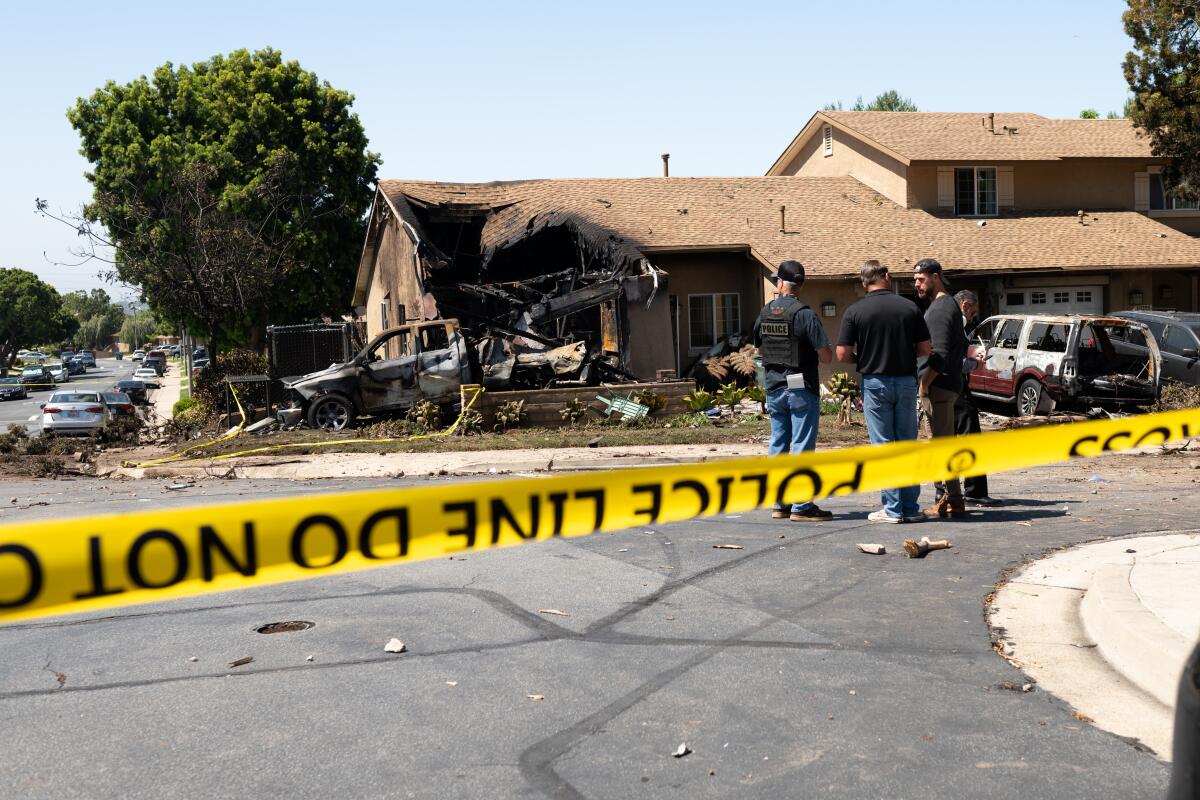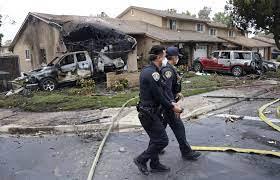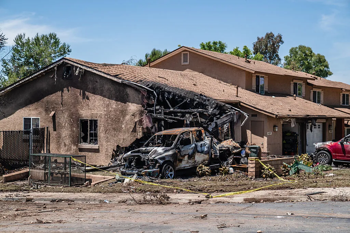Murphy Canyon Plane Crash Raises Alarming Questions as Preliminary NTSB Report Reveals Pilot and Controller Errors
The National Transportation Safety Board (NTSB) has released its preliminary findings on the tragic Murphy Canyon plane crash, shedding light on a chain of critical mistakes that led to the deaths of six people aboard a small jet that crashed into a military housing area in San Diego last month.
The report, while not yet identifying a final cause, reveals a troubling combination of pilot error, communication breakdown, and procedural lapses — prompting experts to call for increased vigilance in high-risk flying conditions.
Crash in the Foggy Darkness Before Dawn
On May 22, just before 4 a.m., a Cessna S550 jet, piloted by music executive Dave Shapiro, was on approach to Montgomery-Gibbs Executive Airport. The aircraft was flying in dense fog and low visibility, conditions that demanded a precise and regulated instrument landing.
However, investigators now say that the airport’s crucial weather reporting system had been knocked offline by a power surge. That system is essential for providing pilots with accurate altimeter settings — the data used to gauge altitude during descent.
According to FAA regulations, no instrument landing approach is authorized if this data is unavailable. Yet, despite this, the pilot was cleared to land and proceeded with the attempt.
Serious Procedural Failures on Both Ends
Experienced pilot and aviation analyst Robert Katz highlighted that both the pilot and the air traffic controller failed in their responsibilities. The controller provided Shapiro with outdated weather data from a nearby military base — MCAS Miramar — where the visibility and ceiling height were below the required minimums for Montgomery-Gibbs.
The controller’s clearance and the pilot’s decision to continue the approach — despite apparent awareness of the deteriorating conditions — created a fatal scenario. The plane was descending too fast and too steeply, effectively “diving through the fog,” according to Katz, without visual confirmation of the runway.
Moments before the crash, Shapiro responded to the controller with an unsettling level of confidence, saying, “I think we’ll be alright,” a statement Katz described as unprofessional and dangerously complacent in such conditions.
Airport Limitations and Poor Preflight Planning
Compounding the situation was the fact that Montgomery-Gibbs Airport does not operate its control tower overnight, from 6 p.m. to 7 a.m., leaving pilots more reliant on automated systems and pre-planning. Katz noted the air traffic controller involved may not have been fully familiar with the airport’s approach procedures.
Even more concerning, the airport’s approach lighting system has been non-functional since March 2022. While runway lights remained active, the system designed to guide pilots during low-visibility landings was inoperative. The FAA had already delayed repairs multiple times, citing the need for an environmental review.
According to the NTSB, cockpit audio captured seven microphone key clicks, which suggests the pilot was trying to activate the lighting system — an action that would have been futile had the pilot reviewed the airport’s current status during preflight planning.
Pilot Experience and Certification
Adding to the complexity of the case, the NTSB report noted that Shapiro was newly certified — only since the previous December — to operate the Cessna S550 solo, without a co-pilot. While legally qualified, his experience flying alone in challenging conditions is now under scrutiny.
The jet was also not equipped with a flight data recorder, though investigators are currently reviewing audio from the cockpit voice recorder and engine performance data to better understand the final moments.
Investigation Ongoing While Families Seek Answers
Despite the growing list of potential contributing factors, the NTSB has not yet named an official cause of the crash. A final report is expected sometime next year. The incident has reignited conversation around airport safety infrastructure, pilot readiness, and the importance of precise adherence to flight procedures, especially in poor weather.
The crash could have been even more devastating, had the aircraft not narrowly missed more homes in the densely populated Murphy Canyon neighborhood. Fortunately, only minor injuries were reported on the ground.
A Wake-Up Call for Aviation Safety
This tragic accident stands as a grim reminder of how quickly a series of small oversights — in judgment, communication, and preparation — can combine into a catastrophic outcome. Aviation experts are urging stricter enforcement of landing protocols, better maintenance of critical airport systems, and more comprehensive pilot briefings before every flight.
As the investigation continues, families of the victims and the broader aviation community await not just answers, but clear actions to ensure such a tragedy is never repeated.


